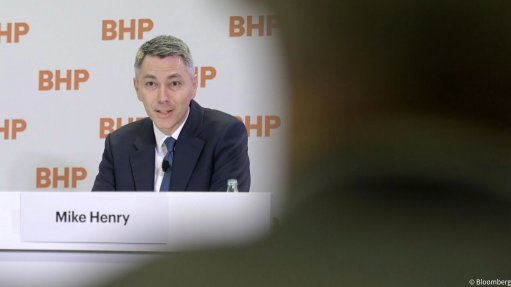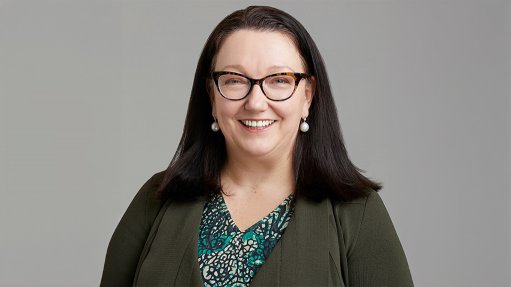Experts agree ‘beyond compliance’ is the way forward for mining

A panel of experts unpacked ESG in South Africa’s mining sector and the lessons they have learnt
There is increasing pressure from stakeholders in all sectors for companies to improve their environmental, social and governance (ESG) practices, but the mining industry, in particular, has to address the negative perceptions of its performance in this regard.
Mining companies are trying to address this through comprehensive ESG strategies that often span beyond regulatory requirements to leave a positive legacy for future generations.
In a webinar hosted by Creamer Media and moderated by Partners in Performance Africa director Sandra du Toit, speakers reflected on the fact that not only were mining companies formulating ESG strategies, but investors and banks were also looking at these factors in their financing decisions to drive positive changes in society.
One such example was South Africa’s Industrial Development Corporation (IDC), which COO Joanne Bate said had gone a step further with its responsible investment policy that looked into corporate resilience.
“Resilient communities and businesses need to be built, while ensuring ESG targets are met. We see responsible investment as key to shifting the economy and growing sustainable value chains in South Africa,” she explained.
The IDC considers the long-term fundamentals of the sector in which applicants are based and tends to favour those with resources and assets that are relevant for the future.
The corporation not only wanted ESG-compliant clients, but strived to ensure the IDC itself created opportunities for companies to be responsible corporate citizens in the country. “We can only create a resilient economy if we transition all of the companies currently operating,” Bate stated.
The IDC does this by supporting clients with social impact programmes and, in some cases, regional social development plans, as well as decarbonisation plans.
Importantly, the IDC encourages clients to move away from mere compliance or complying with only one pillar of ESG.
“ESG can be seen as a tickbox exercise or as a mechanism for triggering dynamic change in the way things are done. We advocate for a holistic approach; if any one part is prioritised, there tend to be unintended consequences,” Bate says, emphasising the importance of considering the entire system clients are trying to grow.
She illustrated the example of a worker needing to choose between the air they breathe or a job that they could wake up and go to, highlighting the need to understand interrelated pieces of a system and driving impact as a collective.
Commenting on the limiting factors that hinder companies from doing more on the ESG front, Bate said complexity had been created in this space with many new concepts arising, and different standards and regulatory frameworks existing on the issue. To this end, she highlighted a need for greater simplicity in what companies sought to achieve.
“Everyone is chasing best practice, but I think it is time for next practice – achieving the right thing and using the tools and means available to achieve it. To accelerate access to the opportunity of ESG, it requires an industrywide approach to finding simplicity and meaning in what we seek to achieve. If each company tries to solve it alone, we will end up with more complexity,” Bate explained.
Harmony Gold sustainable development senior executive Melanie Naidoo-Vermaak said ESG was not a fundamentally new concept to the mining industry, with the industry having long been pioneers of responsible operations and leaving lasting impacts, as well as building trust with stakeholders.
ESG has, however, become more front and centre for many stakeholders including financiers, employees, communities, regulators and customers. “This does intensify pressure on our businesses,” Naidoo-Vermaak said.
In this regard, Harmony’s duty of care extends beyond its gains. The company has brought ESG from the periphery into the mainstream and embedded it as a philosophy of operating. “By being purpose-driven, we have a stronger international proposition, we are more competitive and more value-accretive.”
She added that trust levels in the mining industry were at low levels, hence it had to work exceptionally hard to change those perceptions and create a lasting legacy of positive impact. Naidoo-Vermaak sees other corporates also taking more of a deliberate approach to ESG, which has helped to mainstream it across the industry.
Harmony aims to mine in a manner that is transformative for people, planet and profits, by using ESG to solve global problems and deliver value for the business simultaneously.
Naidoo-Vermaak said there was a high degree of dovetailing and intertwining with the United Nations’ Sustainable Development Goals (SDGs), with many of Harmony’s priorities being focused on the same principles of empowerment, building a more resilient society, clean energy, responsible water management and job creation.
She agreed with Bate that reporting frameworks had become complicated, hence Harmony’s approach of measuring its objectives against the SDGs. It also measured its success through levels of trust, support and acceptance from its collective shareholder base.
Another layer of complexity is added with companies that operate in different jurisdictions. “Our approaches are tailored to these differences. By virtue of South Africa’s history and the scale of social challenges, Harmony has amplified socioeconomic development in this region with a focus on basic needs such as education, employment, water, food and healthcare. Other regions that do not have the same level of poverty and starvation have other focuses,” Naidoo-Vermaak explained.
Digby Wells Environmental Consultants group sustainability manager Sarah Cooper said the most effective ESG strategies were those that were linked with the vision of the company and those for which there was a thorough understanding of the organisation’s risks, impacts and priorities.
She also highlighted the importance of “sound-checking” strategies with the questions being asked by stakeholders.
While there is a need for a group-level strategy focusing on material priorities, how you achieve those goals does look different across the regions where companies operate, which needs context-specific development plans.
For example, she said a greenhouse-gas emission goal would be harder to achieve in a country with an unstable grid and a reliance on generators. Such a country is likely to have a greater opportunity for renewables. “How those overarching goals are achieved will look different in every place,” Cooper stated.
Youth Employment Service (YES) CEO Ravi Naidoo said businesses had historically been focused on what could be done to reduce risk; however, the total ESG operating environment had become material to the business itself. For example, in a country with high levels of youth unemployment, it was a material issue for the business.
“We find that businesses are realising that the broader socioeconomic issue is a material risk for their business and are joining programmes such as YES to lower risk and amplify positive impact,” he explained, adding that these initiatives often aligned with mines’ social labour plans and the Mining Charter.
Additionally, by empowering the community as a whole, companies are able to meet SDG targets.
Rand Merchant Bank (RMB) sustainable finance and ESG head Nigel Beck said there had been an evolution from a focus on compliance and risk management, including managing contamination events, towards business opportunities in the mining industry, including how to use sustainable finance to raise debt or capital.
From an investor perspective, he explained, many banks were using the climate lens to make financing decisions and to try to understand where companies were on their decarbonisation journey.
He added that banks were increasingly considering how companies reported on ESG and whether their commitments were science-based and how it panned out over the short, medium and long term.
“Looking at effective disclosure, we have moved away from purely qualitative disclosure to quantitative disclosure with external assurance. Investors are looking at those ratings and scores and are more likely to invest with companies that score well.”
RMB’s approach is similar to that of the IDC in looking at future-friendly investments such as critical minerals.
Beck stated that financial institutions were increasingly incentivising companies to align their financial strategy with their sustainability strategy.
“We are just at the start of growth in the sustainable financing industry,” he states.
The speakers participated in an ESG in Mining webinar hosted by Creamer Media on November 15 in partnership with Partners in Performance. Sponsors included Ukwazi Mining Services, Harmony Gold, RMB, YES and Digby Wells Environmental Consultants.
Comments
Press Office
Announcements
What's On
Subscribe to improve your user experience...
Option 1 (equivalent of R125 a month):
Receive a weekly copy of Creamer Media's Engineering News & Mining Weekly magazine
(print copy for those in South Africa and e-magazine for those outside of South Africa)
Receive daily email newsletters
Access to full search results
Access archive of magazine back copies
Access to Projects in Progress
Access to ONE Research Report of your choice in PDF format
Option 2 (equivalent of R375 a month):
All benefits from Option 1
PLUS
Access to Creamer Media's Research Channel Africa for ALL Research Reports, in PDF format, on various industrial and mining sectors
including Electricity; Water; Energy Transition; Hydrogen; Roads, Rail and Ports; Coal; Gold; Platinum; Battery Metals; etc.
Already a subscriber?
Forgotten your password?
Receive weekly copy of Creamer Media's Engineering News & Mining Weekly magazine (print copy for those in South Africa and e-magazine for those outside of South Africa)
➕
Recieve daily email newsletters
➕
Access to full search results
➕
Access archive of magazine back copies
➕
Access to Projects in Progress
➕
Access to ONE Research Report of your choice in PDF format
RESEARCH CHANNEL AFRICA
R4500 (equivalent of R375 a month)
SUBSCRIBEAll benefits from Option 1
➕
Access to Creamer Media's Research Channel Africa for ALL Research Reports on various industrial and mining sectors, in PDF format, including on:
Electricity
➕
Water
➕
Energy Transition
➕
Hydrogen
➕
Roads, Rail and Ports
➕
Coal
➕
Gold
➕
Platinum
➕
Battery Metals
➕
etc.
Receive all benefits from Option 1 or Option 2 delivered to numerous people at your company
➕
Multiple User names and Passwords for simultaneous log-ins
➕
Intranet integration access to all in your organisation



















